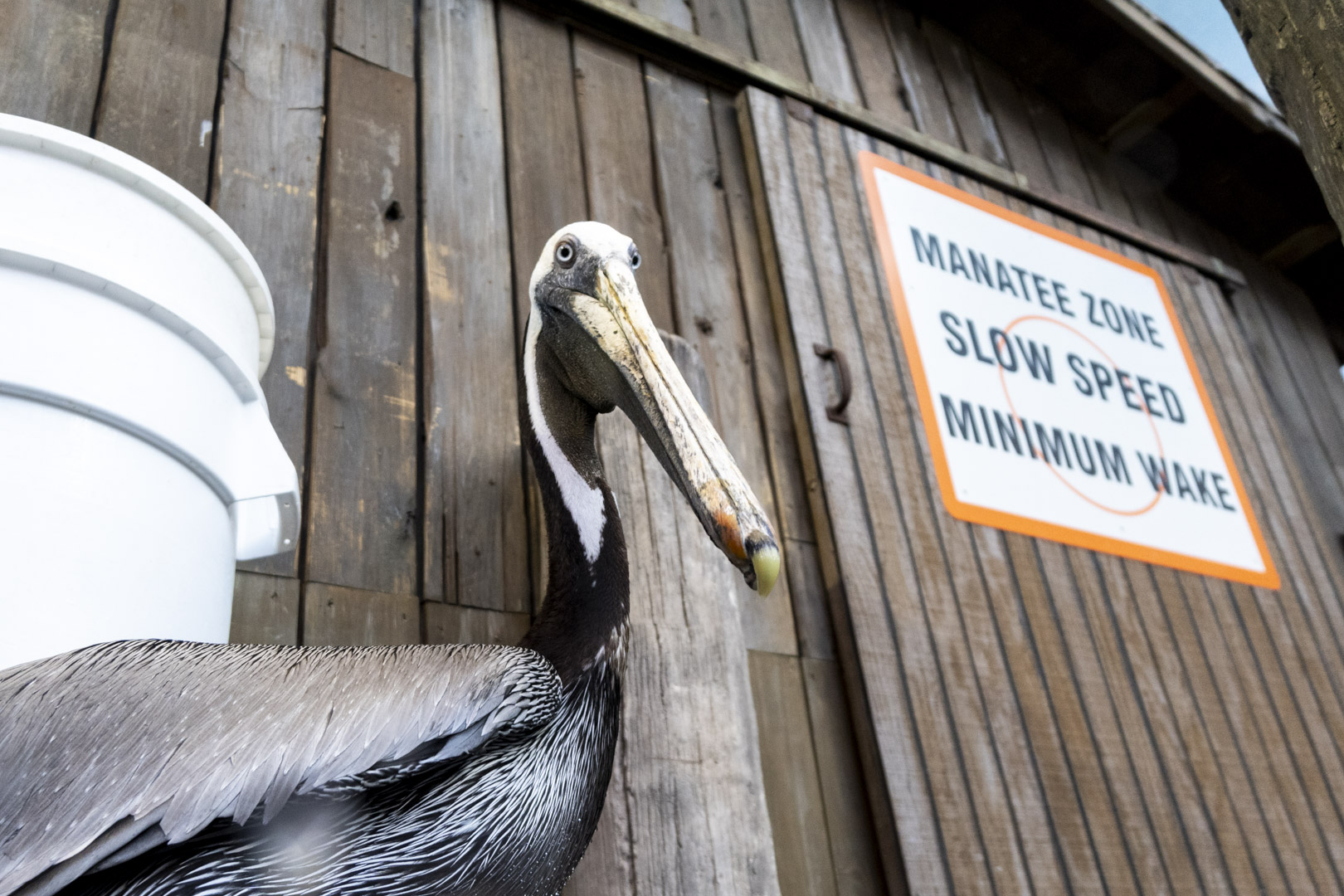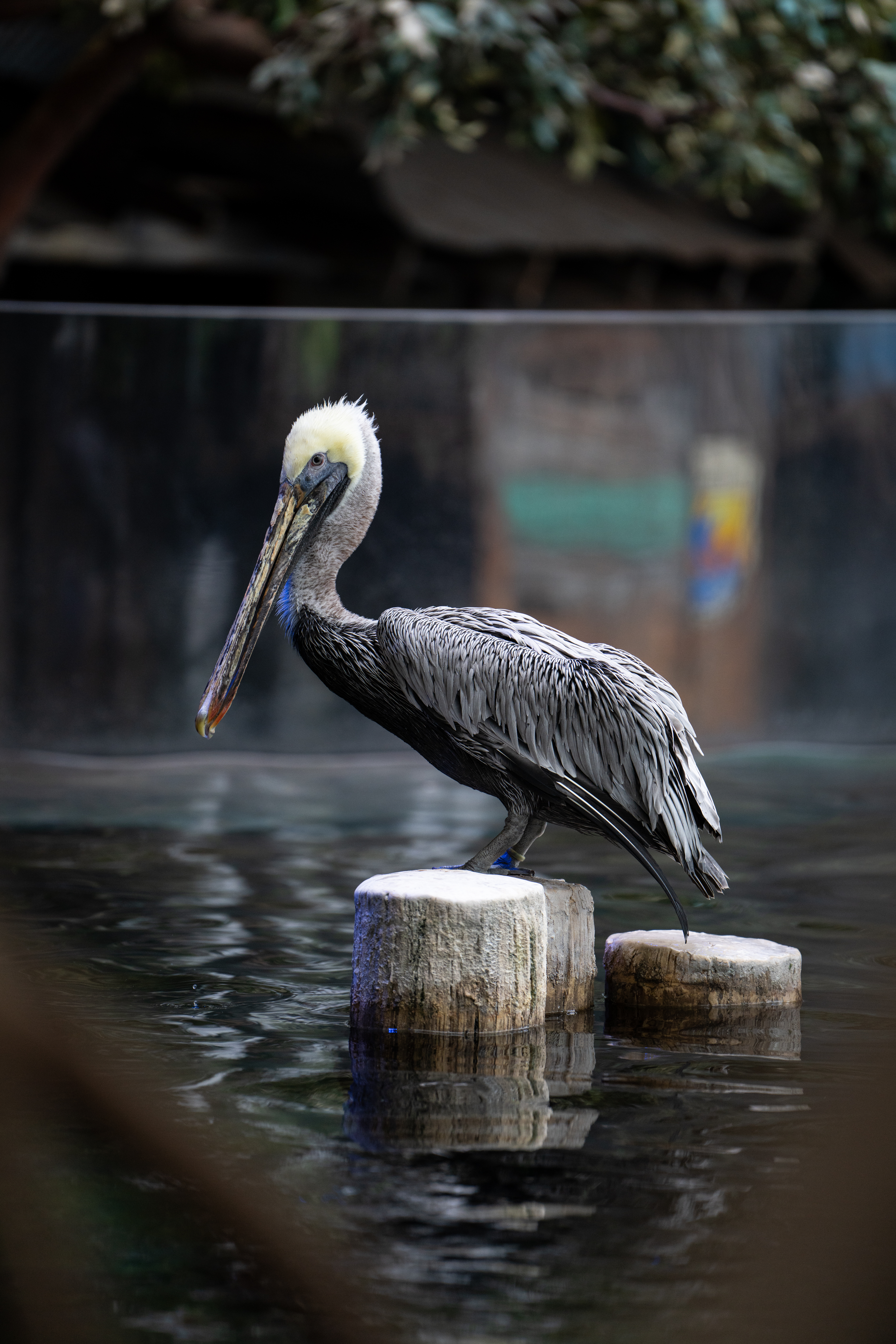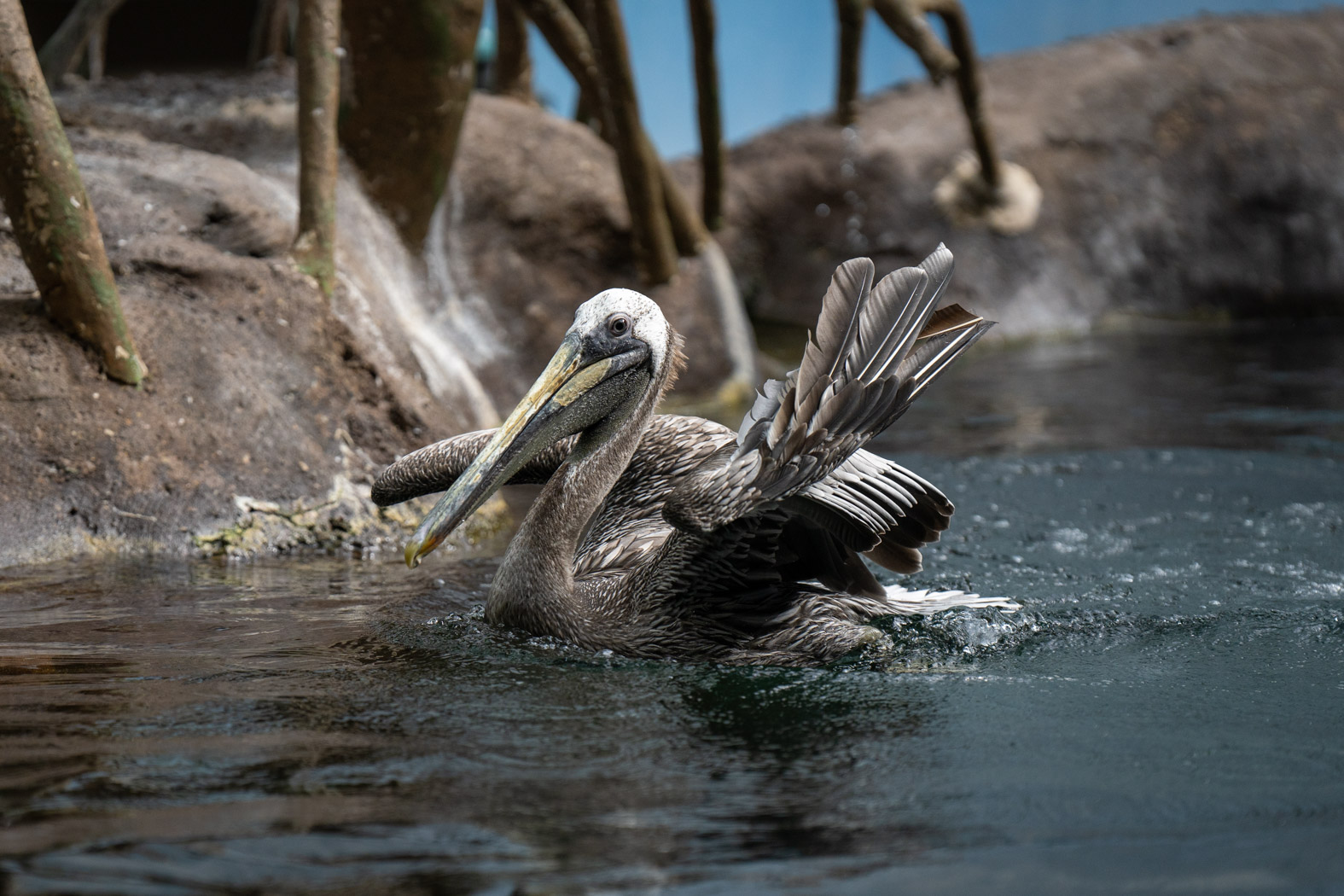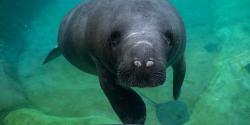If you love watching animals in action, then you won’t want to miss the brown pelicans at the Columbus Zoo and Aquarium! These birds are full of personality and reside in the Manatee Rescue and Rehabilitation Center, where they share space with manatees, a turtle, Southern rays, and other aquatic animals.
Let's meet them!
Sir Peliken, aka Ken
Ken, a 16-year-old pelican, has quite the story to tell. Rescued after an injury left him unable to survive in the wild, he now enjoys a comfortable life under the care of our dedicated Shores & Aquarium region team.

While some pelicans may keep their distance, Ken is anything but shy—he loves interacting with his aquarists and keeps a watchful eye on everything they do. Of course, in his mind, their most important job is making sure he’s well-fed, and he never lets them forget it! Whether he’s observing from a prime perch or waddling up to check on the daily routine, Ken’s curious personality makes him a guest favorite and a beloved member of our animal family.
Scoop
Scoop, a 15-year-old pelican, has embraced his second chance at life with a unique passion—nest building! Rescued after an injury made survival in the wild impossible, he has found comfort and care with our team. In the past two years, he’s discovered a true talent for gathering mangrove sticks and carefully constructing nests, a skill he takes very seriously.

Whether meticulously arranging his latest creation or proudly showing off his work, Scoop’s dedication is both impressive and endearing. His enthusiasm for nest building has become a favorite quirk among his caregivers, making him a standout personality in our pelican family.
Ladle
At just four years old, Ladle may be the youngest of the group, but she’s already making a name for herself with her adventurous yet calm demeanor. Because of angel wing, a condition that prevents her from flying, Ladle is also considered non-releasable but has adapted beautifully to her surroundings. She enjoys exploring, often making her way to the back pool area—especially if her fellow pelican, Ken, is headed that way. Whether she’s paddling through the water or simply observing her surroundings with quiet curiosity, Ladle’s gentle nature and independent spirit make her a special part of our pelican family.
Fun Fact: All three work well with their Care team and have been trained to step onto a scale voluntarily!

A Bird Built for the Coast
The brown pelican (Pelecanus occidentalis) is a coastal bird found along the shores of North and South America. With a wingspan of over six feet and a long, expandable throat pouch, these birds are hard to miss. Unlike most pelicans, which scoop fish while swimming, brown pelicans hunt from the air—soaring high above the water before making a daring dive headfirst to catch their meal.
At the Columbus Zoo and Aquarium, guests can watch these pelicans up close (indoors, too!) as they stretch their wings, preen their feathers, and interact with their habitat. While they don’t need to hunt for food here, they still receive a steady diet of fish, just like they would in their native ranges!
Why Are They in a Manatee Habitat?
You might be wondering why a bird that usually lives on the coast is hanging out with manatees. The brown pelicans at the Columbus Zoo were rescued due to injuries or circumstances that prevent them from surviving in the wild. The Manatee Rescue and Rehabilitation Center provides a safe and enriching environment where they can thrive, just like the manatees recovering in their care.
Watching these pelicans alongside graceful manatees, a gliding turtle, and playful rays is a reminder of how interconnected aquatic ecosystems truly are!
A Comeback Story
Not long ago, brown pelicans were in serious trouble. In the mid-1900s, pesticides like DDT caused their populations to plummet. By 1970, they were officially listed as an endangered species. But thanks to conservation efforts—including the banning of harmful pesticides—the species made a strong comeback. By 2009, brown pelicans were removed from the endangered species list.
Today, they are still vulnerable to habitat loss, pollution, and oil spills, making education and conservation efforts more important than ever. Seeing them up close is not only exciting but also a great way to learn about the importance of protecting wildlife.
Plan Your Visit
Next time you visit the Columbus Zoo, make sure to stop by the Manatee Rescue and Rehabilitation Center to meet these incredible birds. Whether they’re stretching their wings, interacting with their surroundings, or just relaxing near the water, brown pelicans are full of personality and fun to watch.
Looking for more? Check out the Columbus Zoo’s brown pelican page to learn even more about these fascinating birds!









